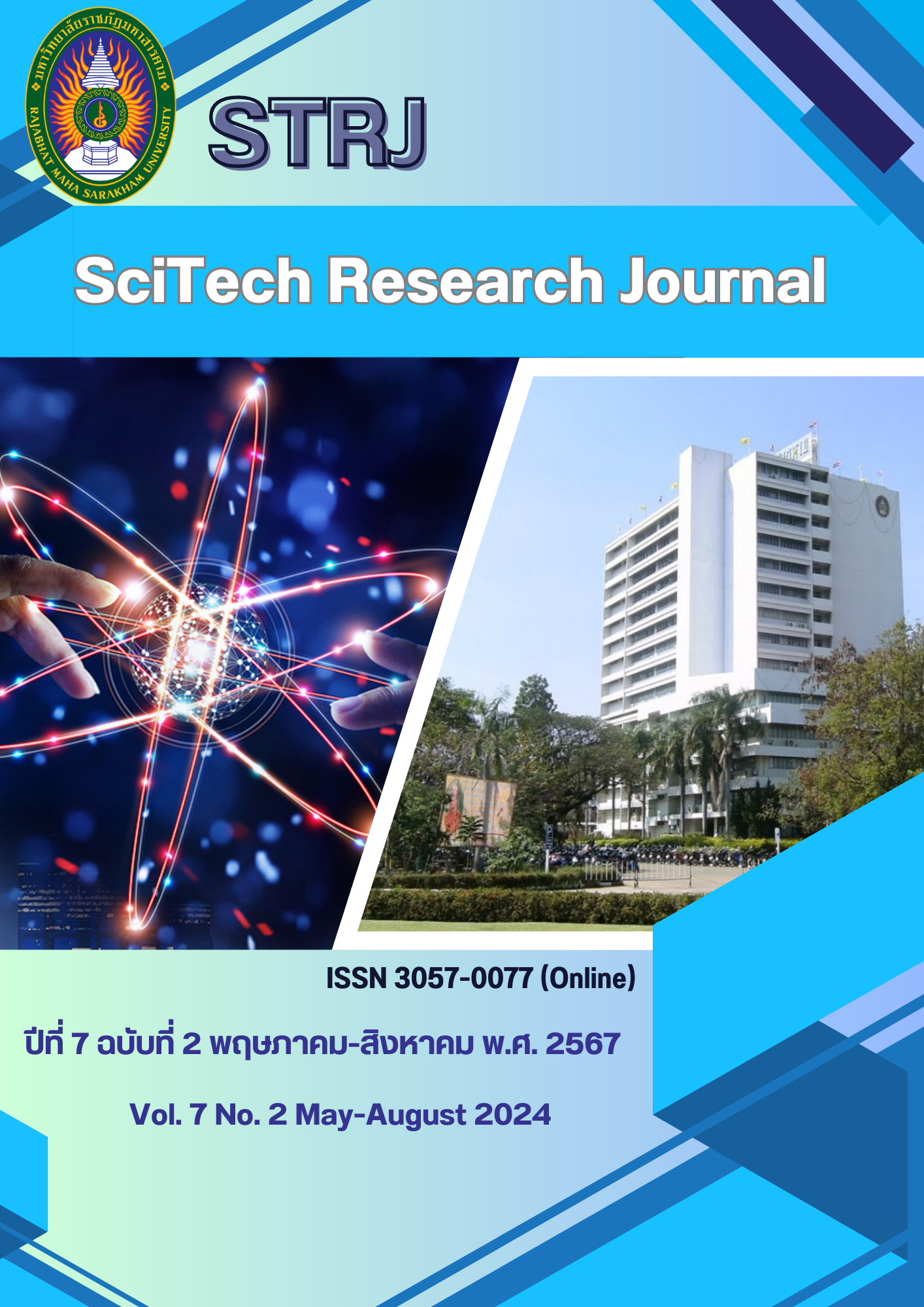Forecasting the number of dengue fever cases and their relationship with rainfall volume in Kalasin province
Keywords:
Forecasting, Dengue fever, Kalasin province, Rainfall volume, CorrelationAbstract
This study aims to investigate the relationship between monthly rainfall and the number of monthly Dengue Fever (DF) cases in Kalasin Province and to develop a model to forecast the number of monthly DF cases in 2024. Monthly Rainfall volume was collected from the Meteorological Department report. The monthly number of DF cases was collected from the 506 Dengue fever reporting system and database of Bureu of Epidemiology. Data were analyzed using descriptive statistics, Spearman rank correlation, and the Box and Jenkins methods. The results showed a moderate relationship between monthly rainfall and the number of monthly DF cases in Kalasin Province, with a Spearman rank correlation coefficient of 0.52 (p-value < 0.001). The seasonal ARIMA(1,1,0)(2,1,1)12 model used for forecasting the number of monthly dengue fever cases in 2024 demonstrated reasonable accuracy. The monthly dengue cases forecast values are higher than the past 6 years monthly average, except that July and August are lower, which are the ends of the rainy season. Therefore, it would be more appropriate for July and August to use the monthly average during these two months instead in determining the epidemic prevention plan for 2024.
References
Bureau of Epidemiology, Ministry of Public Health. (2024). Reporting system and database 506 Dengue fever historical data, Number and rate of illness-death per 100,000 population classified by province. Retrieved from http://doe.moph.go.th /surdata/disease.php?dcontent=old&ds=66
Chan, Y.H. (2003). Biostatistics 104: correlational analysis. Singapore Medical Journal, 44(12), 614–619.
Chang, X., Gao, M., Wang, Y. and Hou, X. (2012). Seasonal Autoregressive Integrated Moving Average Model for Precipitation Time Series. Journal of Mathematics and Statistics, 8(4), 500-505.
Department of Disease Control. (2022). Dengue Fever. Retrieved from https://ddc.moph .go.th/disease_detail.php?d=44
Digital Government Development Agency (Public Organization). (2024). Monthly average rainfall information for each province throughout the country that has been analyzed from station level measurement data from the Meteorological Department using the Inverse Distance Weighted (IDW) spatial averaging method, January 2021 to December 2023. Retrieved from https://data.go.th/dataset/sp atial-rain
Figueredo, M.B., Monteiro, R.L.S., do Nascimento Silva, A. de Araújo Fontoura, J.R., da Silva, F.A.R. & Alves, C.A.P. (2023). Analysis of the correlation between climatic variables and Dengue cases in the city of Alagoinhas/BA. Scientific Reports, 13, 7512.
Hyndman, R., Athanasopoulos, G., Bergmeir, C., Caceres, G., Chhay, L., Kuroptev, K., Zhou, Z. (2024). forecast: Forecasting Functions for Time Series and Linear Models. (Version: 8.23.0) [Computer Software]. Retrieved from https://cran.r-project.org /web/packages/forecast/index.html
Hyndman, R.J. & Athanasopoulos, G. (2018). Forecasting: principles and practice. (2nd ed). Melbourne, Australia: OTexts.
Hyndman, R.J. & Kostenko, A.V. (2007). Minimum sample size requirement for seasonal forecasting models. FORESIGHT, 9, 12-15.
Lewis, C.D. (2023). Industrial and business forecasting methods. London: Butterworths.
Mahidol University Center of Ethical Reinforcement for Research. (2022). Announcement of Mahidol University regarding guidelines for research projects that do not qualify as human research, 2022. Retrieved from https://sp.mahidol.ac.th/th/LAW/poli cy/2565-MU-Non-Human.pdf
Naher, S., Rabbi, F., Hossain, M.M., Banik, R., Pervez, S. & Boitchi, A.B. (2022). Forecasting the incidence of dengue in Bangladesh-Application of time series model. Health Science Reports, 5(4), e666.
Nayak, M.S.D.P. & Narayan, K.A. (2019). Forecasting Dengue Fever Incidence Using ARIMA Analysis. International Journal of Collaborative Research on Internal Medicine & Public Health, 11(6), 924-932.
Nopparat, S. (2007). Seasonal Climatic Variation and Dengue Hemorrhagic Fever in Uttaradit Province. Journal of Health Systems Research, 1(2), 68-79.
Othman, M., Indawati, R., Suleiman, A.A., Qomaruddin, M.B. & Sokkalingam, R. (2022). Model Forecasting Development for Dengue Fever Incidence in Surabaya City Using Time Series Analysis. Processes, 10(11), 2454.
R Core Team. (2021). R: A Language and environment for statistical computing. (Version 4.1) [Computer software]. Available from https://cran.r-project.org
Soyiri, I.N. & Reidpath, D.D. (2013). An overview of health forecasting. Environ Health Prev Med. 18(1), 1-9. doi: 10.1007/s12199-012-0294-6.
Tantawichien, T. & Sawanpanyalert, N. (Ed.). (2020). Guidelines for diagnosis and care of dengue fever patients in adults 2020. Nonthaburi: Department of Medical Services, Ministry of Public Health.
The jamovi project. (2022). jamovi. (Version 2.3) [Computer Software]. Retrieved from https://www.jamovi.org.



